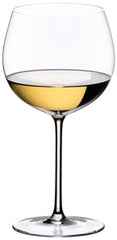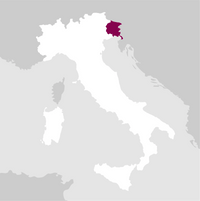详情

香水

颜色

味道
服务于:
12 - 14 °C.
长寿:
03 - 05 years

搭配
Fish
Cheese
Poultry
Veal
White fish
生产者
Russiz Superiore
来自这个酒庄
- 创办年份: 1967
- 酿酒师: Giancarlo Tommasi, Giulio Tirel
- 生产的瓶子: 140.000
- 公顷: 50
Acquired in 1967 and located in Capriva del Friuli, in the heart of Collio, Russiz Superiore is considered the Cru of Marco Felluga.
Its name originates from the toponym of the hills where its vineyards are located and has always been synonymous with quality and excellence. The eagle of Russiz Superiore, the winery’s emblem, comes from the coat of arms of the Torre Tasso princes—a noble family that arrived in Friuli in 1273 and ruled for many years over the lands where the estate now stands, boasting a history of over 700 years. The estate spans 100 hectares, 50 of which are dedicated to vineyards. The planting density is 6,000 vines per hectare, with a predominant focus on white wine production. 阅读更多
Its name originates from the toponym of the hills where its vineyards are located and has always been synonymous with quality and excellence. The eagle of Russiz Superiore, the winery’s emblem, comes from the coat of arms of the Torre Tasso princes—a noble family that arrived in Friuli in 1273 and ruled for many years over the lands where the estate now stands, boasting a history of over 700 years. The estate spans 100 hectares, 50 of which are dedicated to vineyards. The planting density is 6,000 vines per hectare, with a predominant focus on white wine production. 阅读更多


| 名称 | Russiz Superiore Collio Pinot Bianco 2024 |
|---|---|
| 类型 | White green still |
| 葡萄酒名称 | Collio DOC |
| 年份 | 2024 |
| 容量 | 0,75 l |
| 酒精度 | 13.5% 按体积 |
| 葡萄品种 | 100% Pinot Bianco |
| 国家 | Italy |
| 产地 | Friuli-Venezia Giulia |
| 供应商 | Russiz Superiore |
| 产地 | Capriva del Friuli (Gorizia) |
| 气候 | Altitude: 80-200 m. a.s.l. |
| 土壤成分 | Hilly, formed during the Eocene epoch with an alternation of marls (silts and calcareous clays) and sandstones (cemented sands). The soil is impermeable causing surface water run-off, which leads to a very gentle morphology. |
| 栽培系统 | Guyot |
| 收获 | By hand. |
| 酿酒工艺 | After harvesting, the grapes are destemmed and fermented. The juice and pulp undergo cold maceration, and then a gentle pressing to separate from the skins occurs. The must obtained is fermented in stainless steel containers. |
| 陈酿 | On the lees for 6 months and then in the bottle. |




